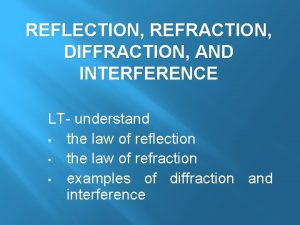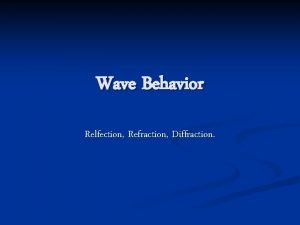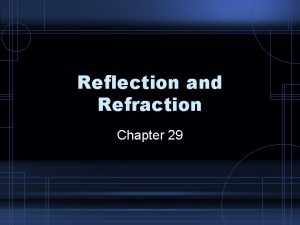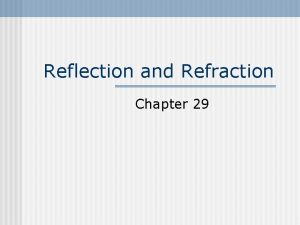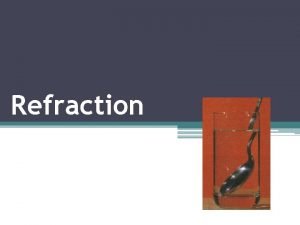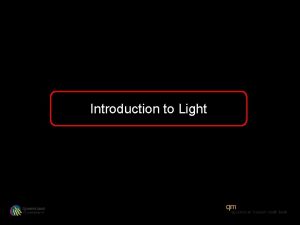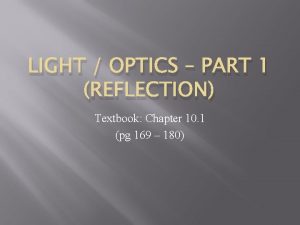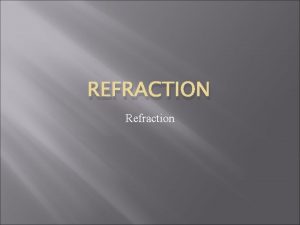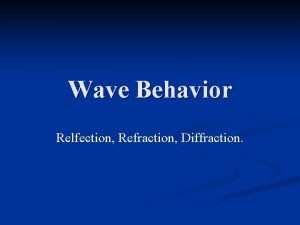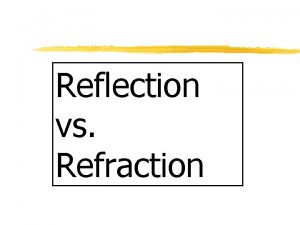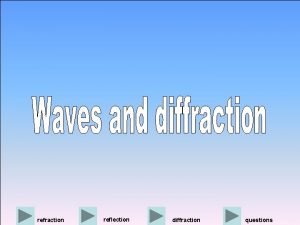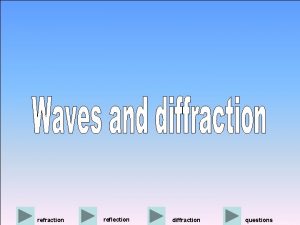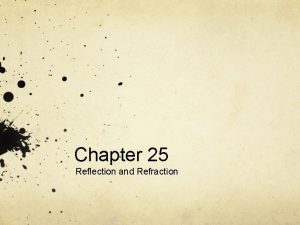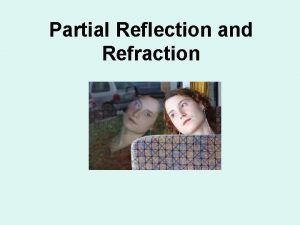Wave Reflection Refraction and Diffraction Reflection If a












- Slides: 12

Wave Reflection, Refraction and Diffraction

Reflection • If a wave reflects from a material that is more dense the reflected wave is inverted • If a wave reflects from a material that is less dense the reflected wave is not inverted

When waves reflect at an angle • The angle of incidence is the angle at which the wave strikes the surface it hits. • The angle of reflection is the angle at which the wave bounces off the surface it hits.

θ i= θ r • Incident Angle (θ) = Reflected Angle (θ)

Refraction • As a wave moves from one medium to another medium it is bent as the speed of that wave changes. • This change of speed and bending is related to the density and temperature of the mediums that it is moving between.

The straw looks broken because light is refracted as it moves from air to water.

The angle of refraction depends on the angle the wave hits at (incident) and the material it is moving between.

Snell’s Law • Snell’s Law is used to predict how a wave will bend as it moves from one medium to another. • n 1 Sin(θ)1=n 2 Sin(θ)2 • n 1=Index of refraction for the incident medium • n 2=Index of refraction for the refracted medium • θ 1=Angle of incidence • θ 2=Angle of refraction • Both incident and reflected angles are measured relative to a normal line which runs perpendicular to the surface of the 2 mediums.

If n 2 is larger than n 1 the wave refracts toward the normal. If n 2 is less than n 1 the wave will refract away from the normal.

Light travels from air with an index of refraction of 1. 0 into an optical fiber with an index of refraction of 1. 44. (a) In which direction does the light bend? (b) If the angle of incidence on the end of the fiber is 22 o, what is the angle of refraction inside the fiber? (c) Sketch the path of light as it changes media.

Diffraction • Diffraction occurs when a wave bends around an obstacle. • Waves with longer wavelengths diffract better than waves with shorter wavelengths. – This is why bass speakers can be places anywhere within a room without affecting its performance.

 Reflection refraction diffraction interference
Reflection refraction diffraction interference Reflection refraction diffraction
Reflection refraction diffraction When a wave strikes an object and bounces off
When a wave strikes an object and bounces off Refraction
Refraction Chapter 29 reflection and refraction
Chapter 29 reflection and refraction What is the message of the poem
What is the message of the poem Refraction examples
Refraction examples Reflection refraction absorption transmission
Reflection refraction absorption transmission Bill nye light and optics
Bill nye light and optics Invictus ernest henley
Invictus ernest henley Why can we represent light rays using a ruler
Why can we represent light rays using a ruler First light optics
First light optics Venn diagram of geometric optics and physical optics
Venn diagram of geometric optics and physical optics
